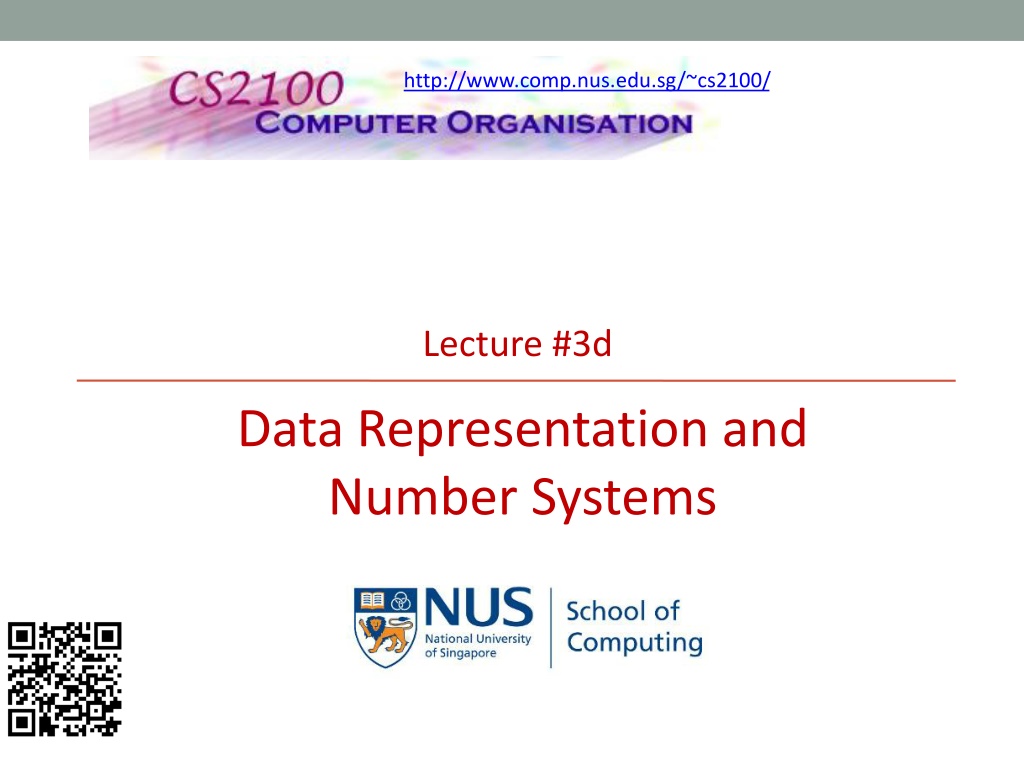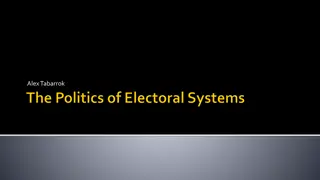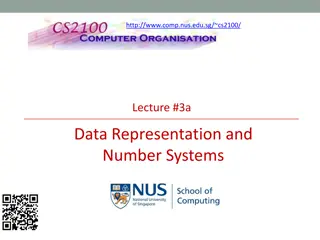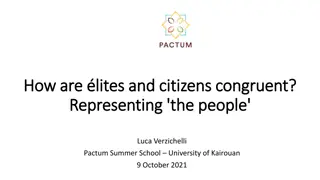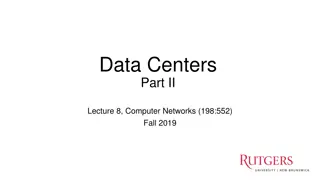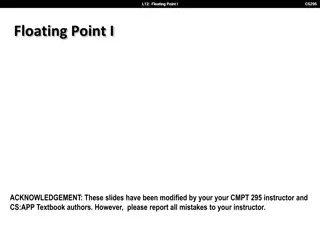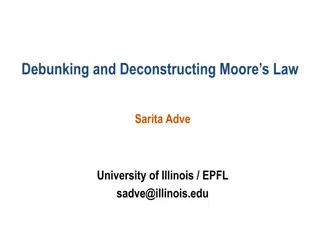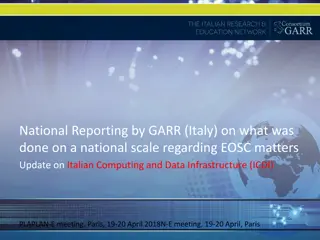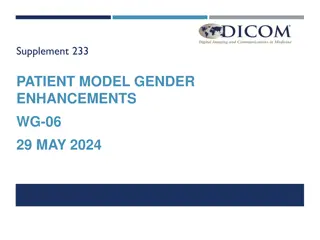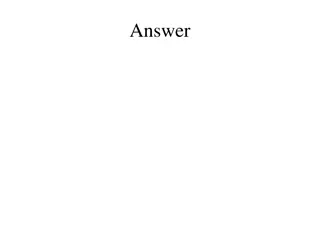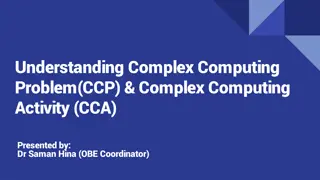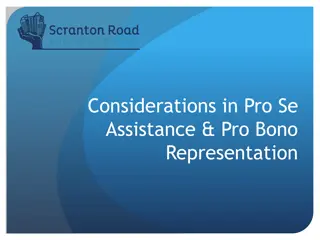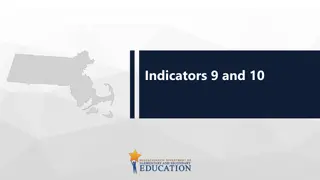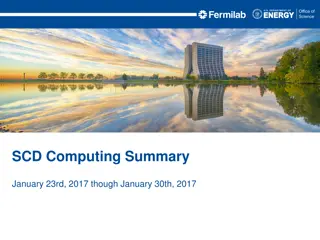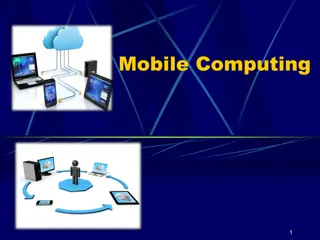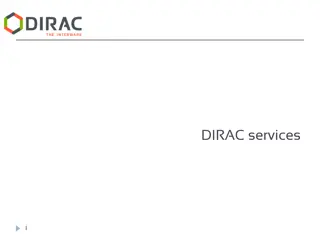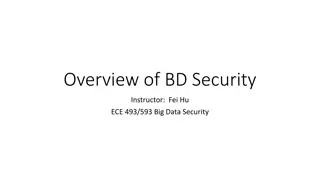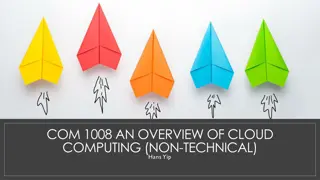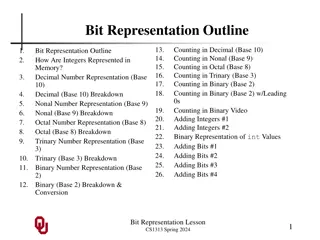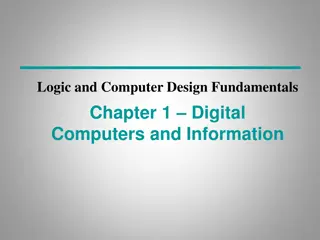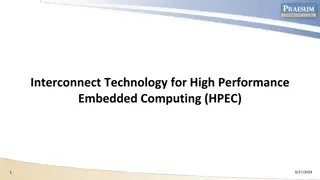Understanding Data Representation and Number Systems in Computing
Exploring the representation of real numbers in computers, this content delves into fixed-point and floating-point representations, including IEEE 754 standards for floating-point numbers. Learn about the structure of these representations and how they enable the processing of both integers and real numbers in computer systems.
Download Presentation

Please find below an Image/Link to download the presentation.
The content on the website is provided AS IS for your information and personal use only. It may not be sold, licensed, or shared on other websites without obtaining consent from the author. Download presentation by click this link. If you encounter any issues during the download, it is possible that the publisher has removed the file from their server.
E N D
Presentation Transcript
http://www.comp.nus.edu.sg/~cs2100/ Lecture #3d Data Representation and Number Systems
Lecture #2: Overview of C Programming 1 - 2 Questions? Ask at https://app.sli.do/event/qVCWNryB45Bnh6p2HRfnFG OR Scan and ask your questions here! (May be obscured in some slides)
Lecture #3: Data Representation and Number Systems 3 11. Real Numbers Many applications involve computations not only on integers but also on real numbers. How are real numbers represented in a computer system? Due to the finite number of bits, real number are often represented in their approximate values.
Lecture #3: Data Representation and Number Systems 4 11.1 Fixed-Point Representation In fixed-point representation, the number of bits allocated for the whole number part and fractional part are fixed. For example, given an 8-bit representation, 6 bits are for whole number part and 2 bits for fractional parts. fraction part integer part assumed binary point If 2s complement is used, we can represent values like: 011010.112s = 26.7510 111110.112s = -000001.012 = -1.2510
Lecture #3: Data Representation and Number Systems 5 11.2 Floating-Point Representation (1/4) Fixed-point representation has limited range. Alternative: Floating point numbers allow us to represent very large or very small numbers. Examples: 0.23 1023 (very large positive number) 0.5 10-37 (very small positive number) -0.2397 10-18 (very small negative number)
Lecture #3: Data Representation and Number Systems 6 11.2 IEEE 754 Floating-Point Rep. (2/4) 3 components: sign, exponent and mantissa (fraction) mantissa sign exponent The base (radix) is assumed to be 2. Two formats: Single-precision (32 bits): 1-bit sign, 8-bit exponent with bias 127 (excess-127), 23-bit mantissa Double-precision (64 bits): 1-bit sign, 11-bit exponent with bias 1023 (excess-1023), and 52-bit mantissa We will focus on the single-precision format Reading DLD pages 32 - 33 IEEE standard 754 floating point numbers: http://steve.hollasch.net/cgindex/coding/ieeefloat.html
Lecture #3: Data Representation and Number Systems 7 11.2 IEEE 754 Floating-Point Rep. (3/4) 3 components: sign, exponent and mantissa (fraction) mantissa sign exponent Sign bit: 0 for positive, 1 for negative. Mantissa is normalised with an implicit leading bit 1 110.12 normalised 1.1012 22 only 101 is stored in the mantissa field 0.001011012 normalised 1.011012 2 3 stored in the mantissa field only 01101 is
Lecture #3: Data Representation and Number Systems 8 11.2 IEEE 754 Floating-Point Rep. (4/4) Example: How is 6.510 represented in IEEE 754 single- precision floating-point format? -6.510 = -110.12 = -1.1012 22 Exponent = 2 + 127 = 129 = 100000012 10000001 1 10100000000000000000000 sign exponent (excess-127) mantissa We may write the 32-bit representation in hexadecimal: 1 10000001 101000000000000000000002 = C0D0000016 (Slide 4) 11000000110100000000000000000000 As an int , it is -1060110336 As an float , it is -6.5
Lecture #2: Overview of C Programming 1 - 9 Quiz Please complete the CS2100 C Number Systems Quiz 4 in Canvas. Access via the Quizzes tool in the left toolbar and select the quiz on the right side of the screen.
Lecture #3: Data Representation and Number Systems 10 End of File
